Topics
XJ6 critique
After living with the 1972 XJ6 a few weeks, strengths and weaknesses have become more articulated.
The elegant exterior body style retains the essence of Sir William Lyon’s esthetic genius that gave us the early XK roadsters, the E-type, and the classic saloons of the 1960s.
Early prototypes mirrored the saloon interior heritage with toggle switches, a newspaper tray in the center, walnut facia panels, and a swept-back under-dash.
But the Lyons touch began to fade as the XJ6 interior moved into production. Designers incorporated runaway plastic and much less wood and chrome. The quaint dial and toggle switches of the vintage years became unsatisfying rockers. The marvelous MK2 flocked newspaper tray morphed into a paper thin scoop-out in the middle of the dash without any apparent function.
Trim is less refined (for example, cheap plastic bullnose bumpers line the edge of the dashboard) while the cubby box, a MK2 charmer, evolved into an oddly shaped (and useless) space with a crazy fold-out mirror! Plus, the warning indicators are downright ugly, apparently influenced by the brutalist school of modern architecture. And climate control, clearly an afterthought — what a jumble of knobs, levers and undecipherable labels!
To finish the critique, Jaguar installed strange kneecap half-shelves in the front foot boxes — whatever were these intended for? Copies of the London Times? They will not survive as the restomod gathers steam.
The overall impression is tired without any antique quality worth renewing, but the scope isn’t just cosmetic. There are functional problems as well:
- clock unreliable (and not worth fixing like the wonderful embedded tach clock in the Mk2)
- tachometer works only on six cylinders; translator required for LS V8 engine
- speedometer must be modified for LS electronic controls
- air circulation inadequate, heater/AC not acceptable
- obsolete indicators (choke engagement light and low oil pressure warning for example)
- controls are scattered (for example fog toggle separated from other light rockers)
- AM/FM radio works but technically outdated
Functional redesign
Two major trends have shaped interior cabin and dash development since 1972: climate control and information technology. Separate heater and AC systems are fully integrated for better comfort and efficiency, while digital connectivity has radically transformed the automotive experience. We can barely exist now without a backup camera, navigation aid, streaming music, and computerized vehicle data.
So the production 1972 interior must be re-imagined, and we’ll take a page from the earliest circa 1967 prototype design with its wood-trimmed steering wheel, flat walnut facia panels, flowing under-dash, and cleaner look.
The approach is guided by the notion that form should follow function. And the first place to start is with the heat and air conditioning system. Back in 1972, Jaguar implemented an early, and deeply flawed, climate control system. Basically everything must all be removed, including the twin blower fans, ducts, and unwieldy evaporator. The Jaguar evaporator was specially designed to snug up to the firewall and there is no modern plug-and-play replacement. The new system must be crafted from scratch.
Dash fitment
The material below has been subsequently updated. See also completed interior, interior overview, and dash evolution posts.
Fitment is the initial hurdle since the XJ6 dash is extremely narrow by modern standards. Even the smallest available aftermarket evaporator squeezes out the existing fuse panel (a paltry 10 fuses mounted like two finger sandwiches) and the top row of gauges. A large modern fuse panel will need to be relocated elsewhere in the cabin, and after much trial-and-error, a pleasing configuration may be a top row climate control/center louver, followed by a tier of gauges, and then a bank of new back-lit LED rockers with helpful symbols so the label strip can be eliminated.
Re-formatted LED warning indicators can be pushed to the left side, accommodated by smaller side air louvers and reduced diameter speedometer and tachometer.
Here is a mockup to envision how it might look.
The iPhone, mounted on a permanent magnetic pad, interfaces with the 1-DIN head unit for streaming audio and a backup camera, mounted on the rear license plate frame, via wifi. The smartphone also handles navigation, phone calls (don’t worry … NO texting!) and other apps.
The OEM indicator/warnings scattered across the facia — high beam, turn signals, seat belts, choke (lower right of steering wheel), hazard, ignition (and alternator below par output), low oil pressure, and low brake fluid/parking brake on — are simplified with four backlit LED warnings:
- seat belts
- parking brake
- brake fluid
- check engine (MIL)
The GPS digital speedometer incorporates turn, hazard, and high beam indicators.
Some functions can be streamlined. With self-illuminated rocker switches and AC controls as well as LED-backlit gauges, there is no need for a separate panel illumination or map light switch. The original heater fan rocker switch is now incorporated into the climate control panel. Thus, the 10 vintage rockers have been replaced with 9 new ones, but with enhanced capability.
Another modification to contemplate involves the ignition-start system. The 1972 ignition switch casing incorporated a clumsy steering column lock mechanism that, as a consequence, fixes the key location along the bullnose edging; Jaguar’s ignition key enclosure looks like a cheap workaround.
An alternative would be an electronic encrypted RFID entry system with a push button engine start (similar to what’s in most modern cars these days) that would incorporate anti-theft features. The start button can be located anywhere on the dash with embedded LED backlighting.
The dash surface treatment could range from modern/metallic to old school walnut burl.
As noted above, the firewall-to-dashboard facia dimension is extremely short in the XJ6 cabin design; even an inch or two can make a difference in getting various components to fit.
A space-saving option consolidates all instruments into just two gauges: a speedometer-odometer cluster and a engine-fuel combo. This then frees up the center facia area immediately in front of the evaporator (even efficient electronic gauges need about 2″ of clearance with wiring) plus the rocker switches — only 1″ of clearance required — can be re-arranged in two rows for more convenient driver access (a little less stretching to reach the right side). Climate controls then drop down to just above the single DIN head unit (digital media receiver).
The version below lowers the facia to where the original bullnose edging stops, positions an electronic engine start button away from the steering column, squares off the dash panel ends, and adds an underdash treatment (left side for illustration purposes).
At this point in the planning stage, a comparison of original Jaguar versus anticipated restomod features/functions highlights the component specification and sourcing decisions that lie ahead.
Engine gauges
There are five original XJ6 small gauges arrayed across the top of the center dash facia cover:
[1] Voltage — analog gauge reads 10-16 volts with “normal” at 13
[2] Oil Pressure — analog gauge reads 0-16 psi
[3] Coolant Temperature — analog gauge reads inlet manifold temperature from capillary bulb without calibration
[4] Time — plastic analog face, electric Kienzle clock (oddly, a German component)
[5] Fuel Level — analog gauge linked to tank selection switch
A single 4″ replacement combo gauge provides accurate microprocessor stepper motor driven analog readouts for voltage (0-18v range), oil pressure (0-144 psi), coolant temperature (120-260F), and fuel level with a low fuel warning LED. A digital time display would be provided on the speedometer (see below).
Speedometer/tachometer
The two XJ6 driver instruments measure speed via a mechanically driven speedometer (0-140 MPH range) that includes a odometer, trip mileage, with high beam indicator bulb, and
engine revolutions via an electrically driven tachometer (0-5500 RPM).
A single 4″ combo replacement measures speed (0-160 MPH) by GPS with LCD screen (1/4 mile time, trip mileage, peak MPH, 0-60 time, speed, elevation, clock, direction), high beam and turn signal/hazard indicators.
Engine revolutions (0-6000 RPM) would be electronically provided by the LS engine CPU.
Warnings and indicators
A new set of backlit LEDs would replace all XJ6 warning and indicator bulbs. The face of the new LEDs would be black until activated.
The XJ6 seat belt red plastic warning with an incandescent bulb on the driver facia is lit (accompanied by buzzer) when any gear selected and the occupied front seat belt is not fastened. A backlit LED with “fasten belt” symbol would illuminate when the occupied front seat belt is not fastened (a companion chime is under consideration).
The brake fluid Level and handbrake engaged warning are combined in a red plastic light; the incandescent bulb is illuminated whenever the parking brake is engaged and/or a low level of brake fluid is in the reservoir. These warnings would be separated with two individual LED backlit indicators (descriptive symbols indicate type of warning).
A check Engine/MIL backlit LED, activated by the engine’s CPU signal, replaces the ignition warning (battery on or low voltage alternator generation) and oil pressure warnings. The scope of the warning includes hundreds of engine parameters, not just system voltage and oil pressure.
The turn indicators on the driver dash — left/right incandescent bulbs with large green plastic covers — would be replaced with embedded left/right green LEDs in the speedometer (see above).
The dedicated hazard warning, now an incandescent bulb with red plastic cover, would be eliminated by using the embedded speedometer turn signal indicators; LEDs flash together (hazard flasher also makes clicking sound).
The high beam indicator would remain embedded in the speedometer. The choke engaged warning, an incandescent bulb on facia with amber plastic cover linked to choke control lever, would be eliminated.
A driver door warning buzzer sounds when the driver door is opened with key still in the ignition switch. The buzzer will be replaced with a more pleasing chime sound.
There is no existing lights on warning; a chime sound will be added whenever side, fog, or headlights are on and driver door opens.
Rocker Switches
The original ten rockers switches — [1] map/interior, [2] panel, [3] side and [4] headlights, [5] fuel pump, [6] wiper, [7] washer, [8] fan, [9] rear window heat, and [10] hazard — will be replaced with ten LED backlit rockers that incorporate both text descriptions and symbols.
The decision to use a single custom EFI fuel tank has yet to be reflected in rocker switch design.
The bottom of the new rocker switches will illuminate when the switch is activated. For example, if the fuel pump selector rocker is pushed in, the bottom “left” text will be lit to indicate that the left pump has been switched on. Three switches — hazard, wiper, and washer — have no bottom indicators since their activation is obvious.
The Map/interior Light and Panel Light have been eliminated; panel (gauge) lights will be automatically turned on whenever the side lights are illuminated. The backlit dash makes a separate map light redundant, and the interior pillar lights will only be used for entry when doors are open.
The Fog Lights rocker now on the driver facia will be relocated next to the headlight rocker.
The new Antenna Position rocker raises the powered antenna (only for analog AM/FM reception) that is located in the left rear wheel well. This antenna could be activated by the stereo receiver, but since many times the digital media unit will be streaming music or handling communications that does not require any antenna, a dedicated switch seems appropriate and more efficient.
The new Custom Shift rocker toggles between the standard transmission shift program and a special purpose one; both modes can be custom programmed. Just what the “special purpose” use will be (high performance, poor weather, or other some profile) remains to be determined.
Climate control
Dedicated climate controls will adjust fan speed, temperature (hot and cold separately) and air flow direction (defrost windshield, facia, floor vent, or a facia/floor combination).
Digital media unit
A single DIN unit like the JVC KD-AV41BT will be installed at the bottom of the dash facia. Functions include bluetooth, built-in microphone, smartphone integration, USB recharging. The LCD screen display will be paired with a backup camera that is activated when the shifter is in reverse. A magnetic holder on the facia dash will allow convenient mating of smartphones to the unit.
Ignition-start
Ignition-Start could incorporate vehicle security through an electronic start button with remote key fob RFID capabilities. The existing 4-position key (off-accessories-run-start) and physical steering lock mechanism would then be eliminated. One advantage of dropping the physical lock is that the start button could be placed anywhere on the dash, freeing up design choices significantly (see, for example, shifter console).

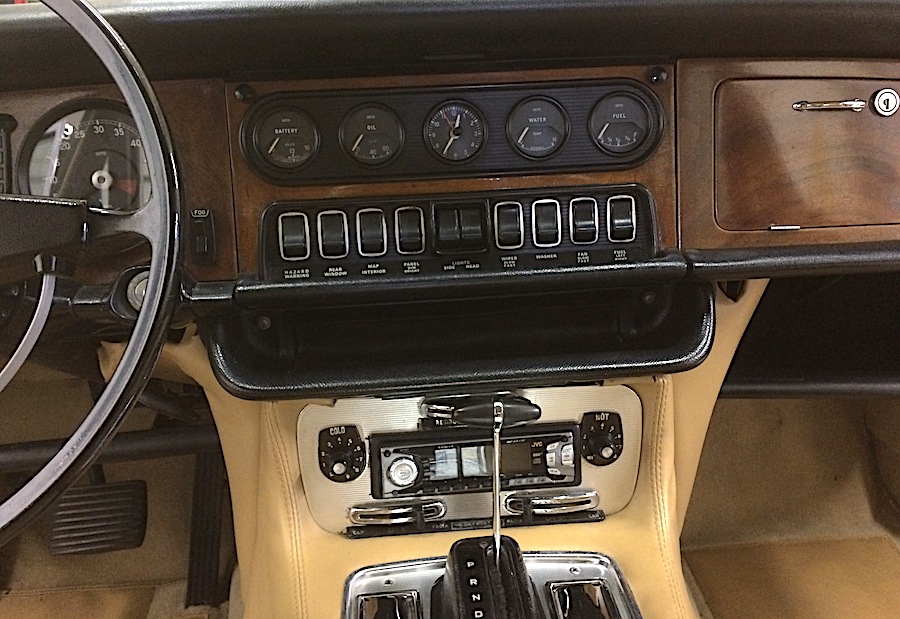



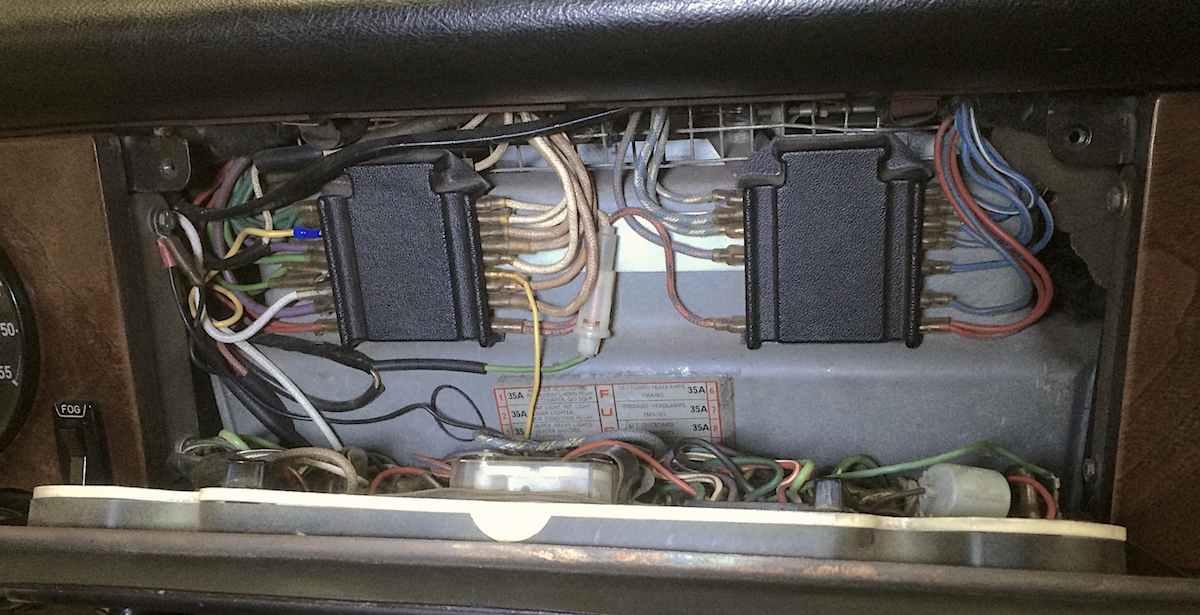
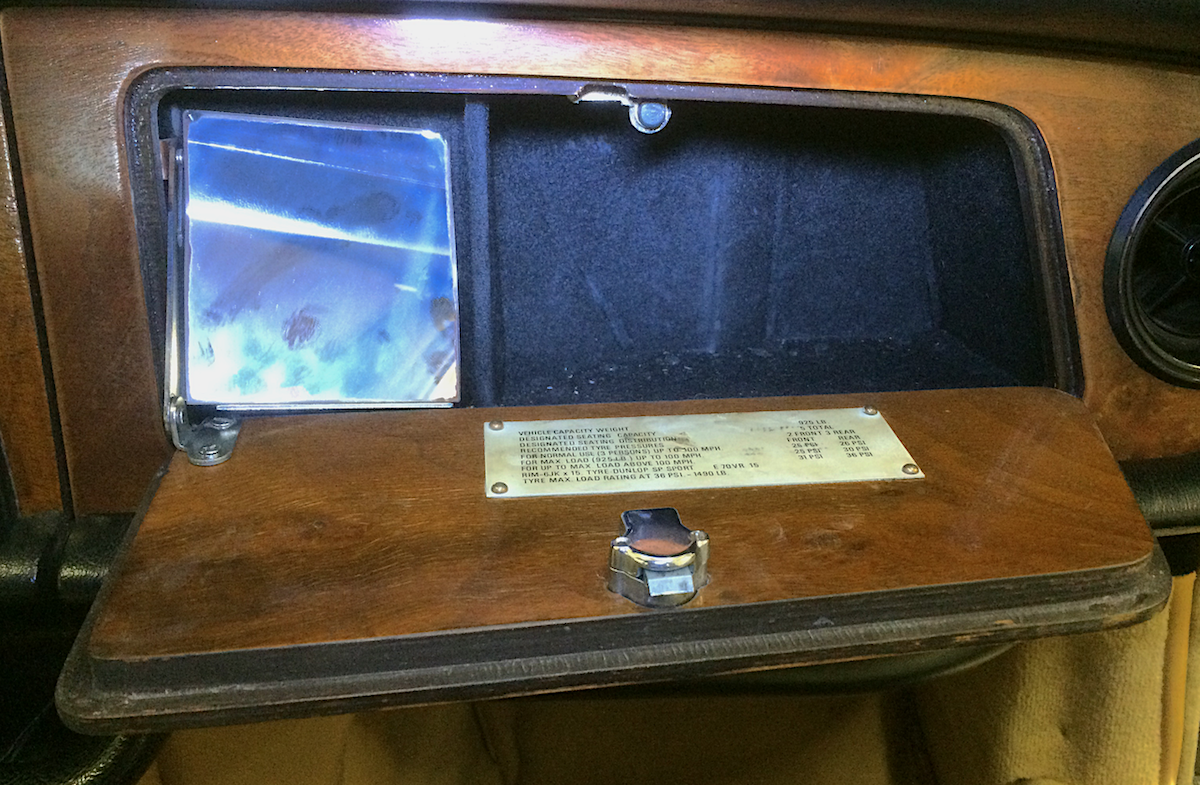
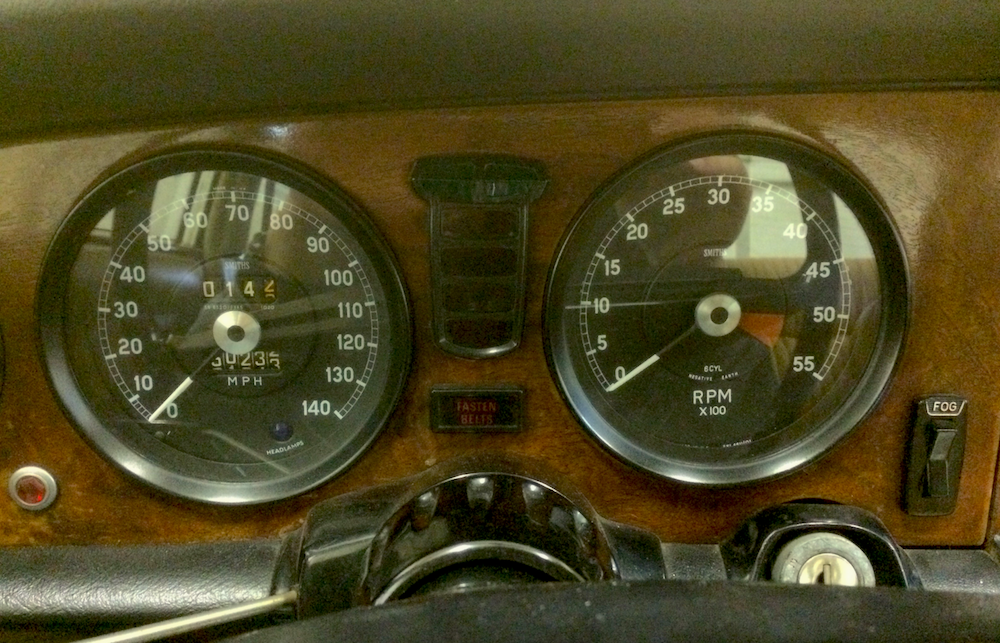
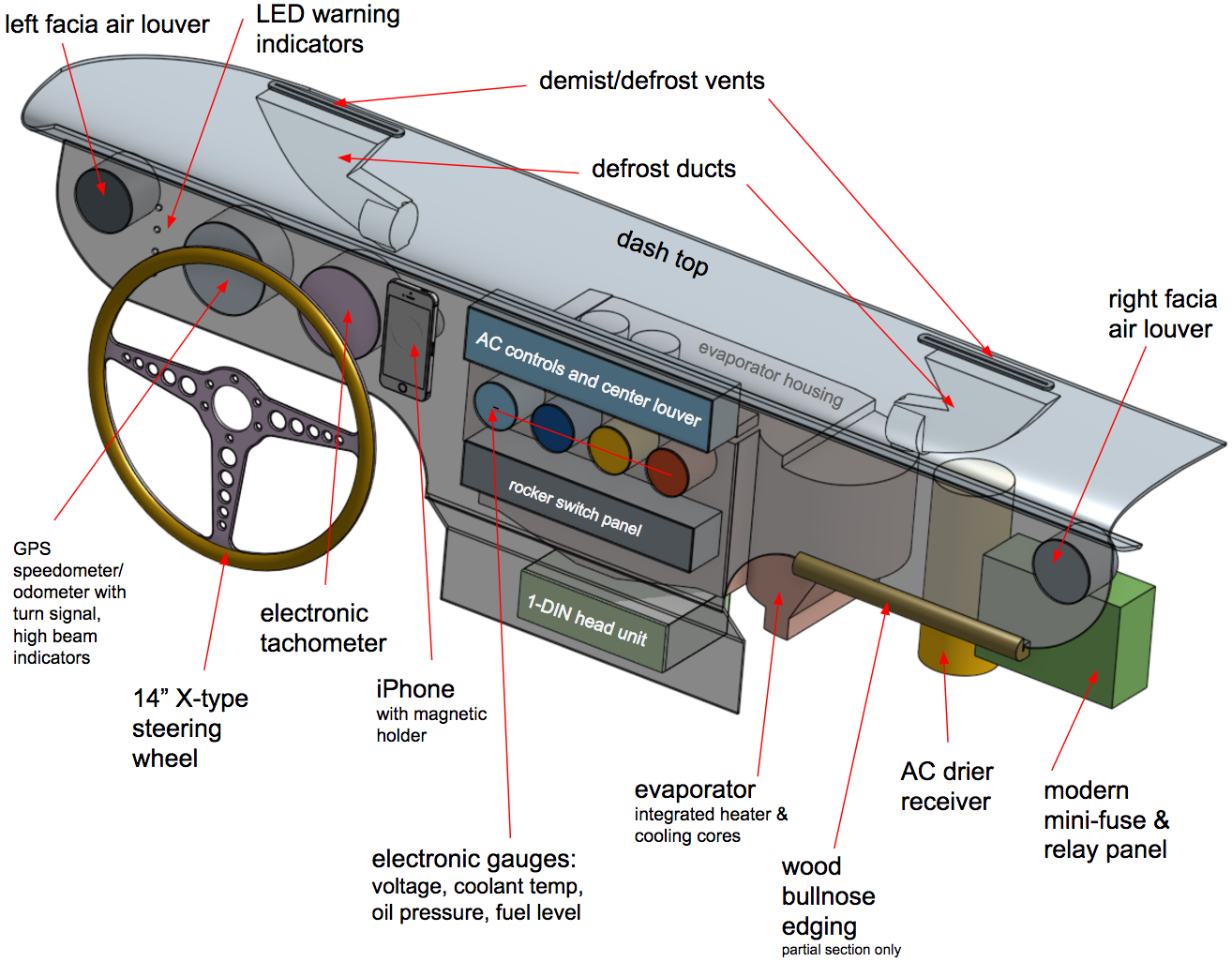








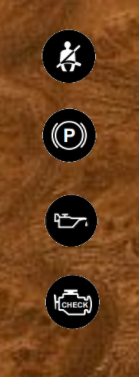
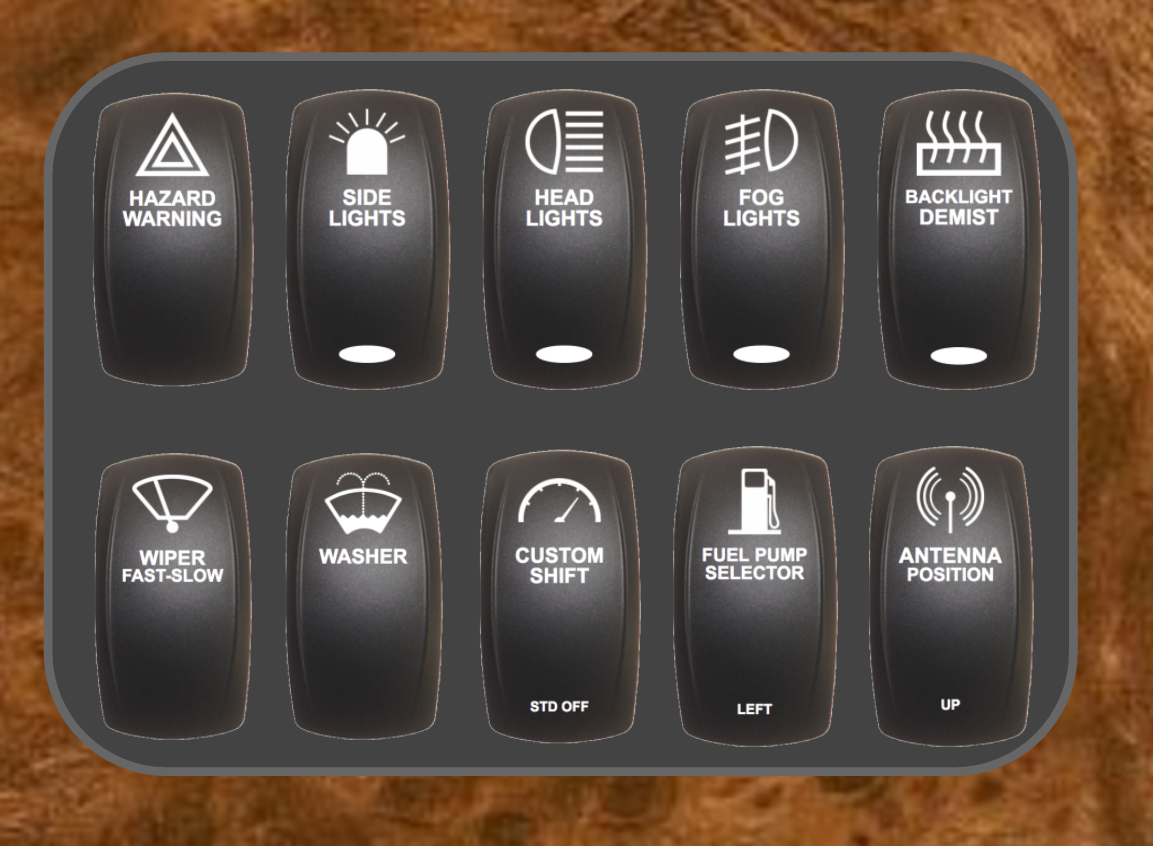




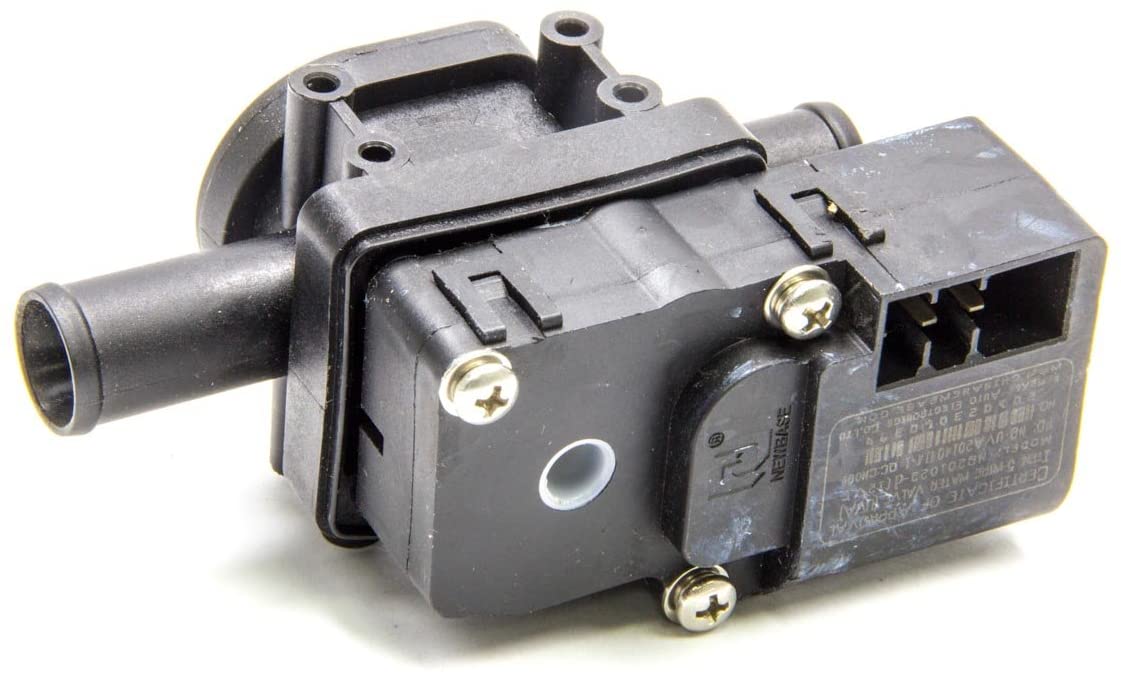
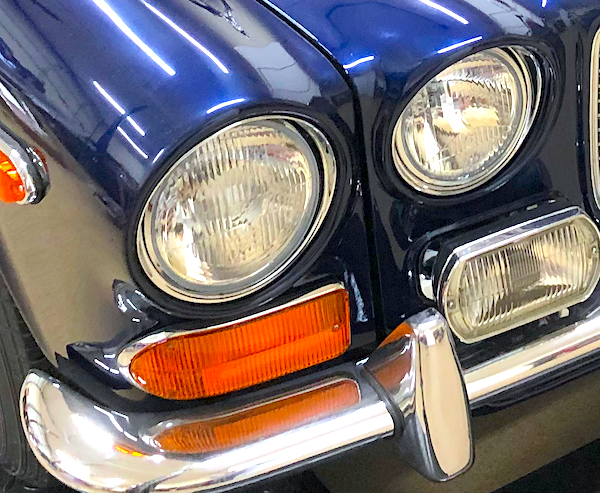


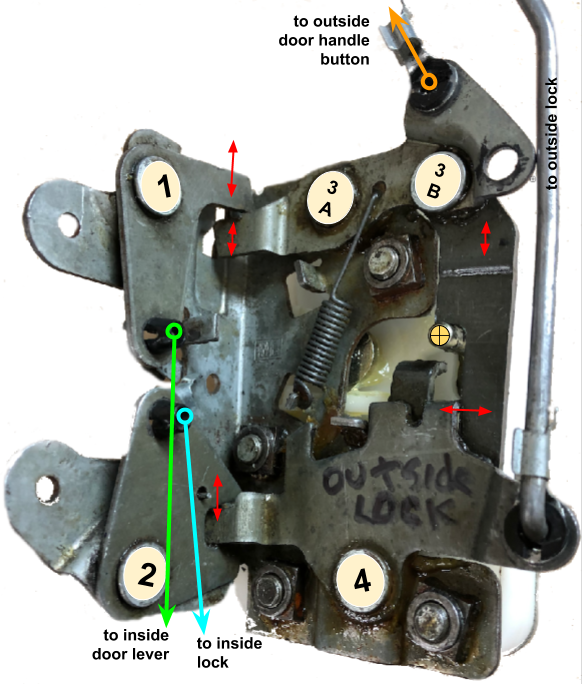
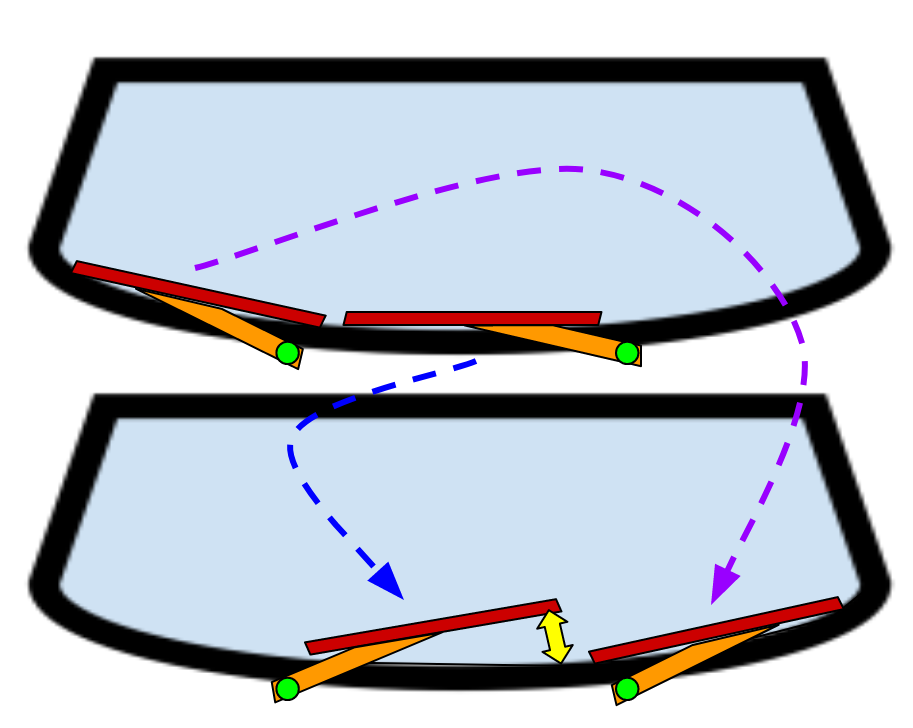

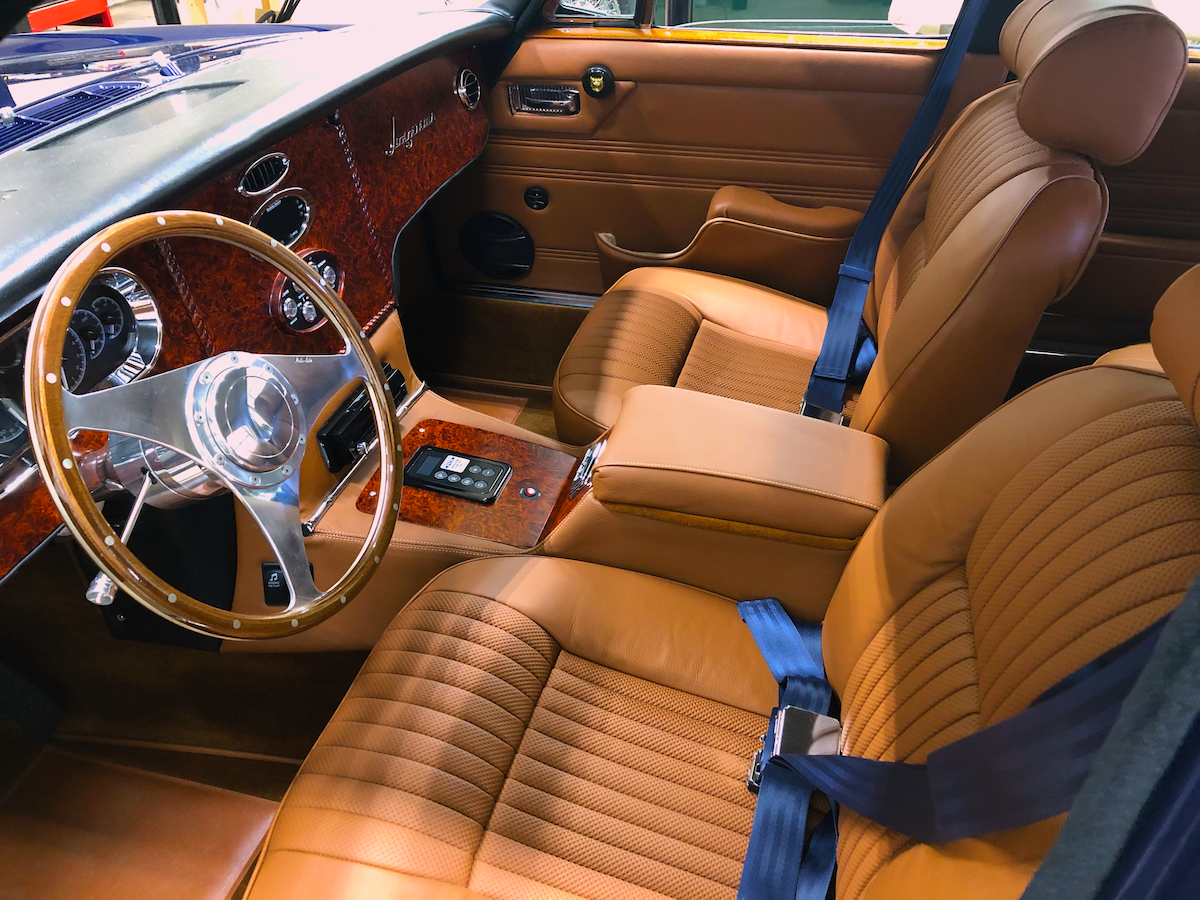
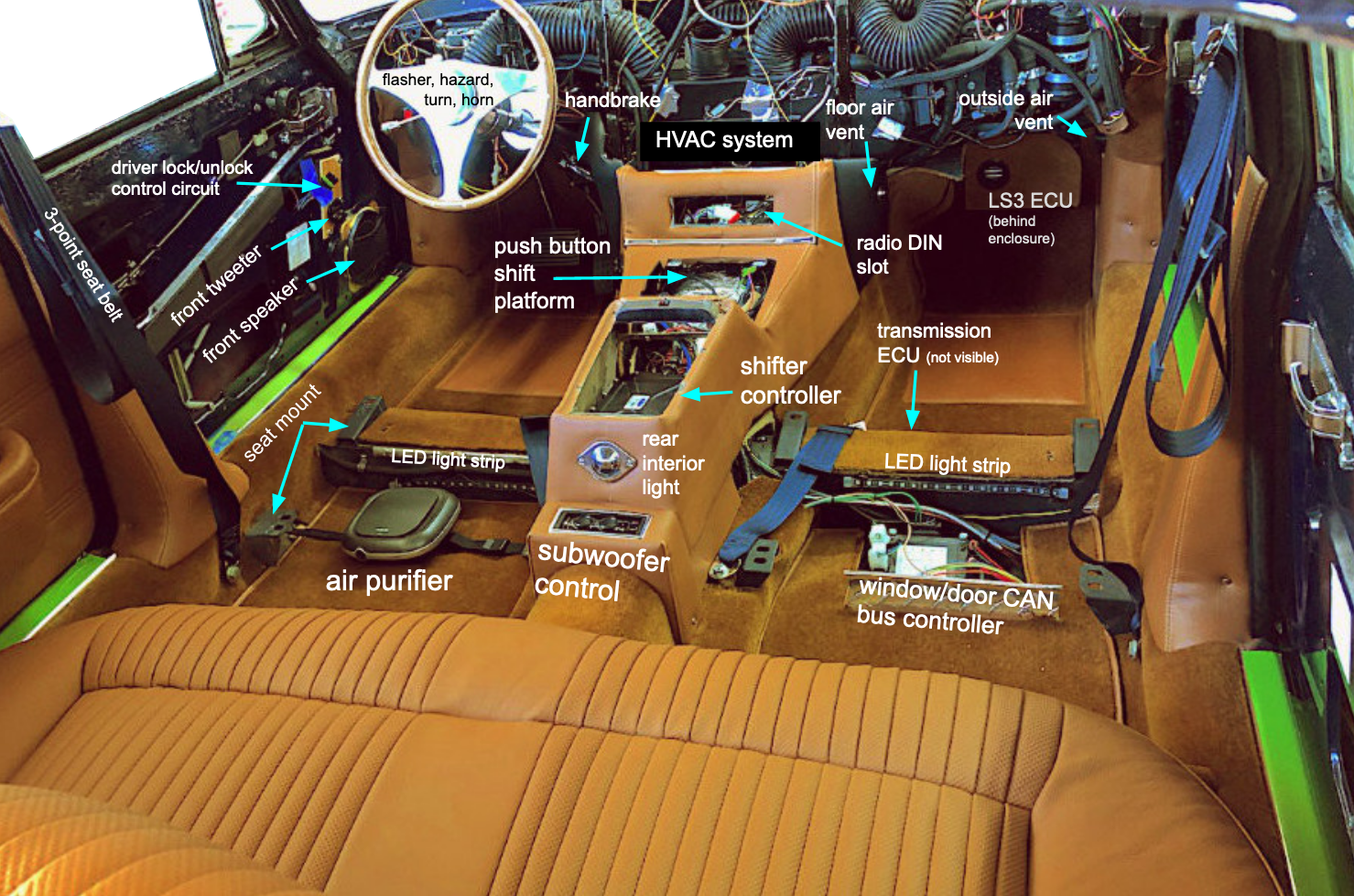
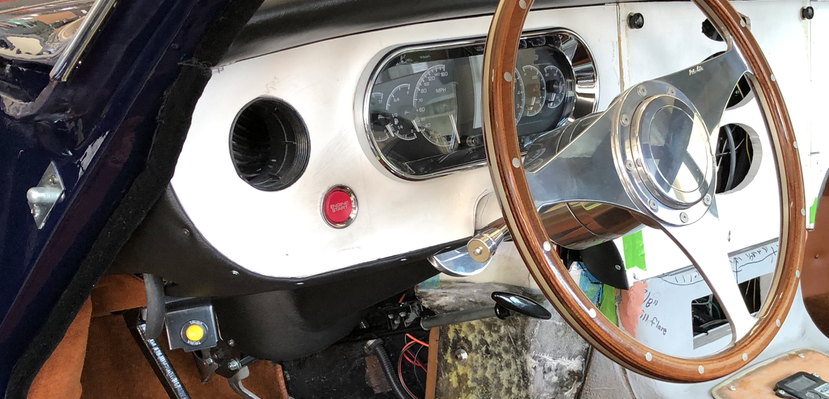
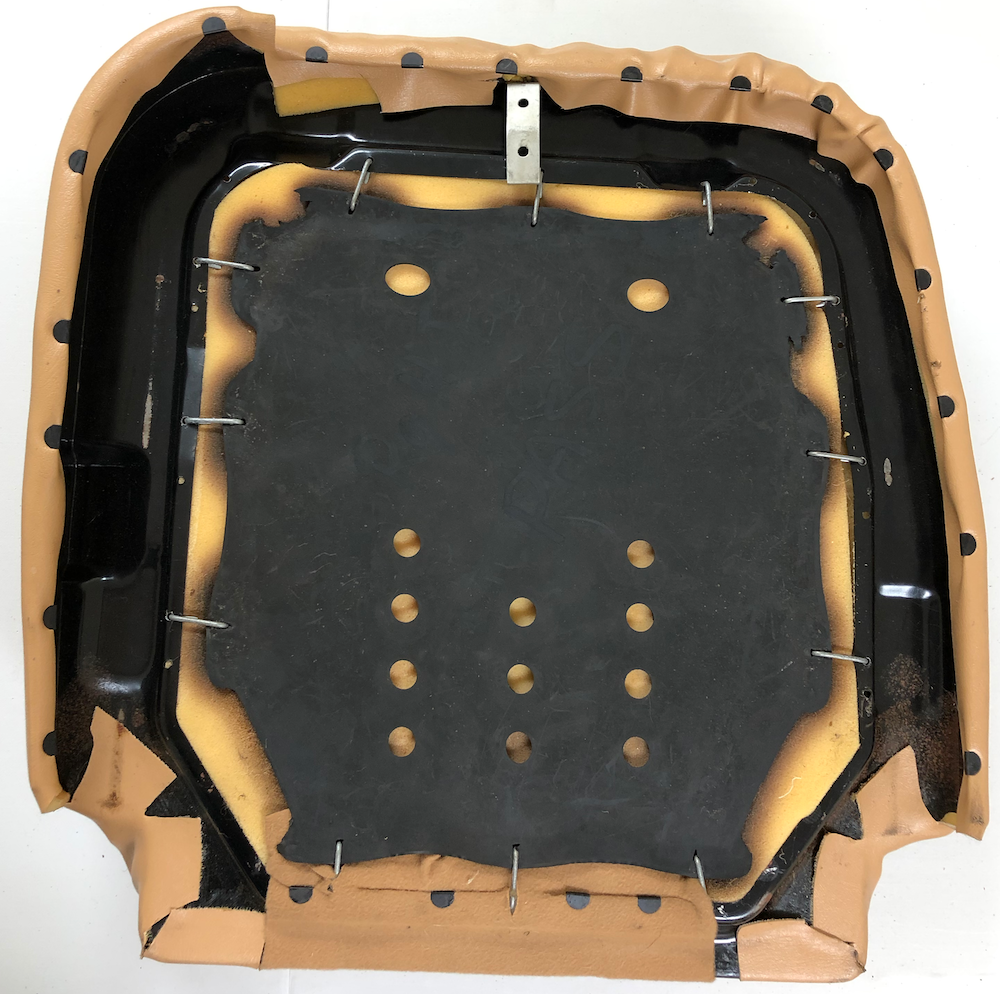






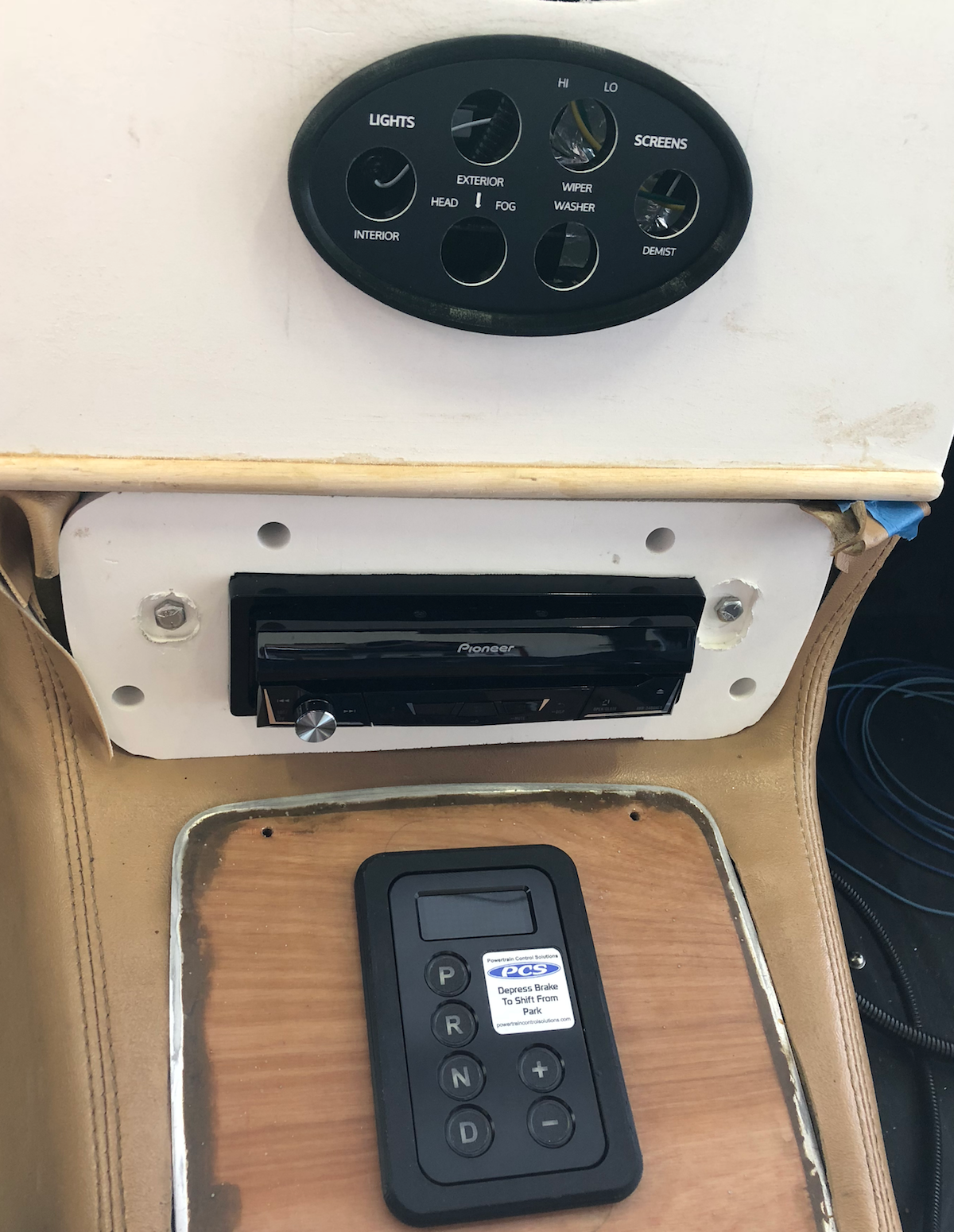

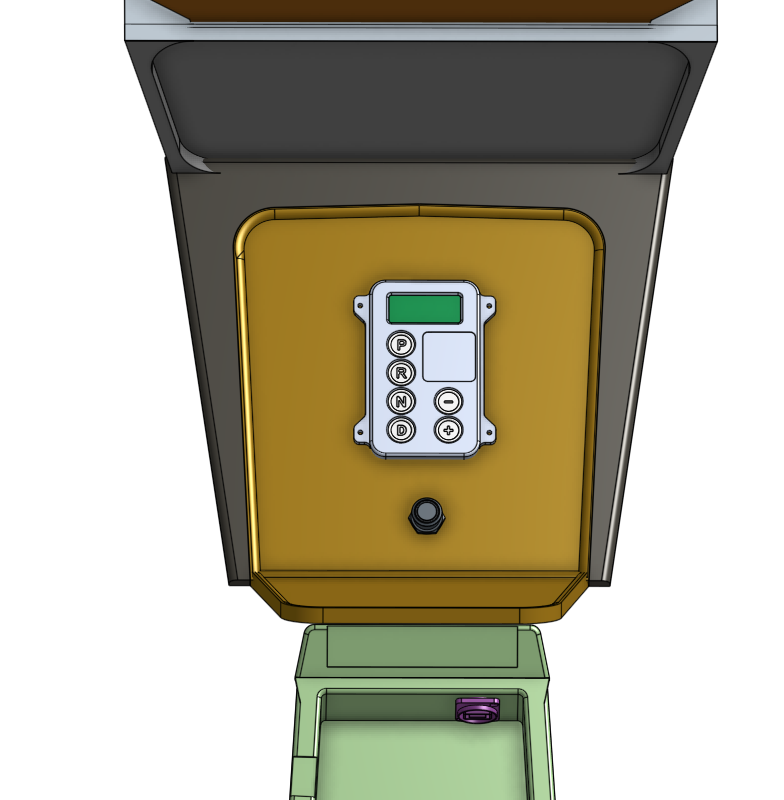
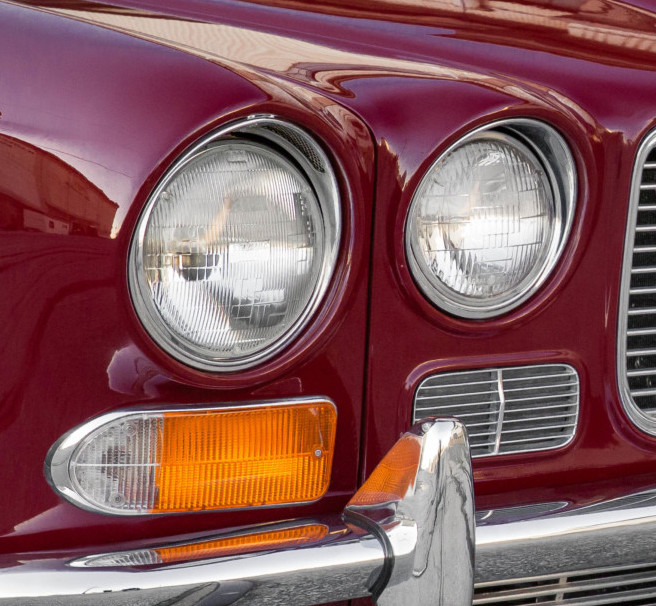

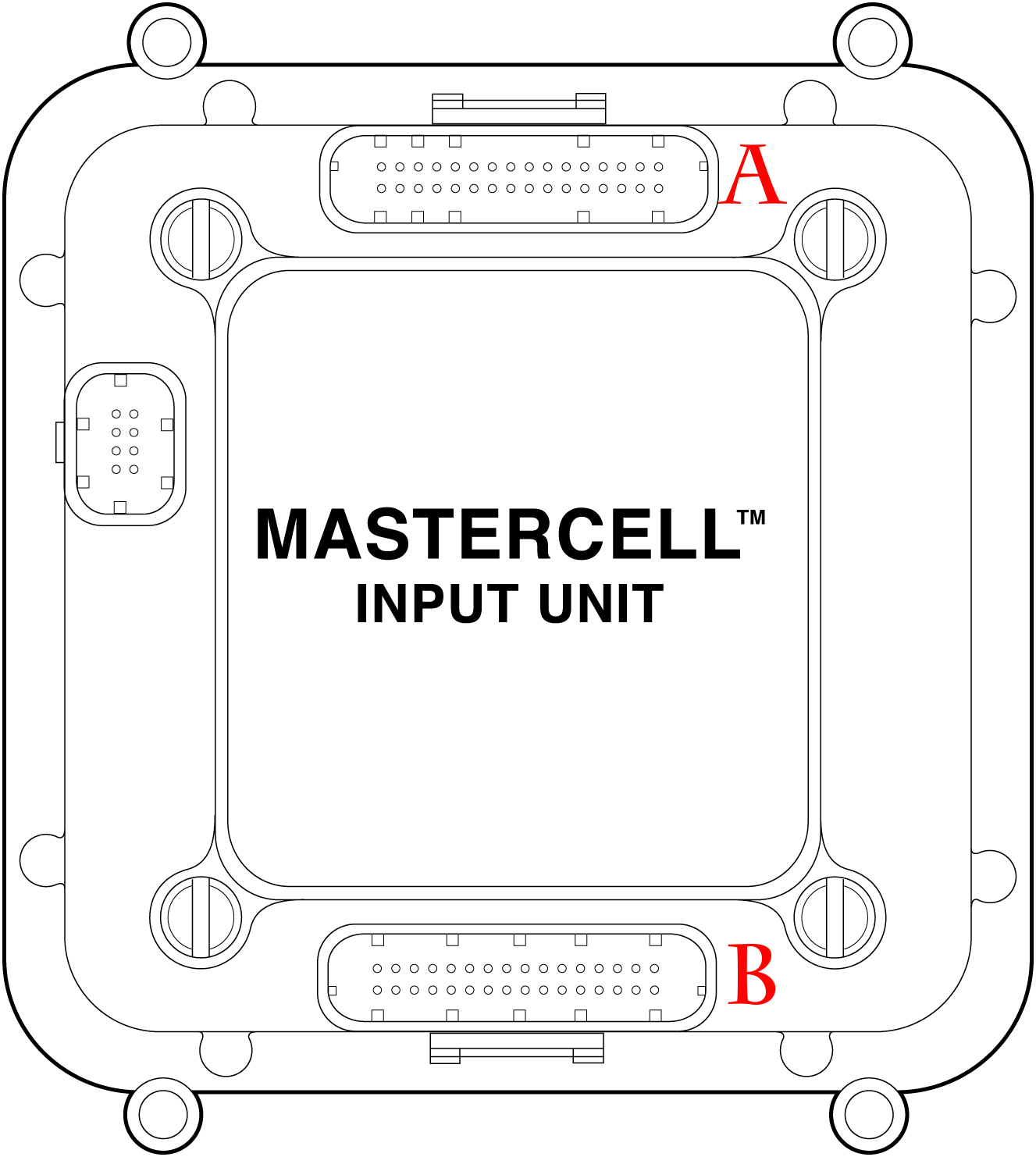





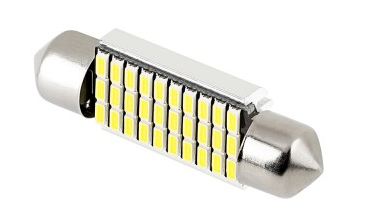
Very nice! I’ve got a MK2 that I’m planning to modernize in a similar fashion. Keep the good ideas coming.
Looking forward to all the electrical mods that I guess will be necessary. I believe electrics were the XJ6’s Achilles Heel.
Eric, while your reasoning on the revised dash makes sense, the curved end burl version is more attractive than the “straight” version following it. Looking forward to following posts, thank you.
I like the multitude of options you are playing with. Especially the brilliant way you have presented them! Although a wooden sports car steering wheel never could be a part in a luxury sedan of mine. Maybe I would also like to have somewhere to have my sun glasses easily accessible.